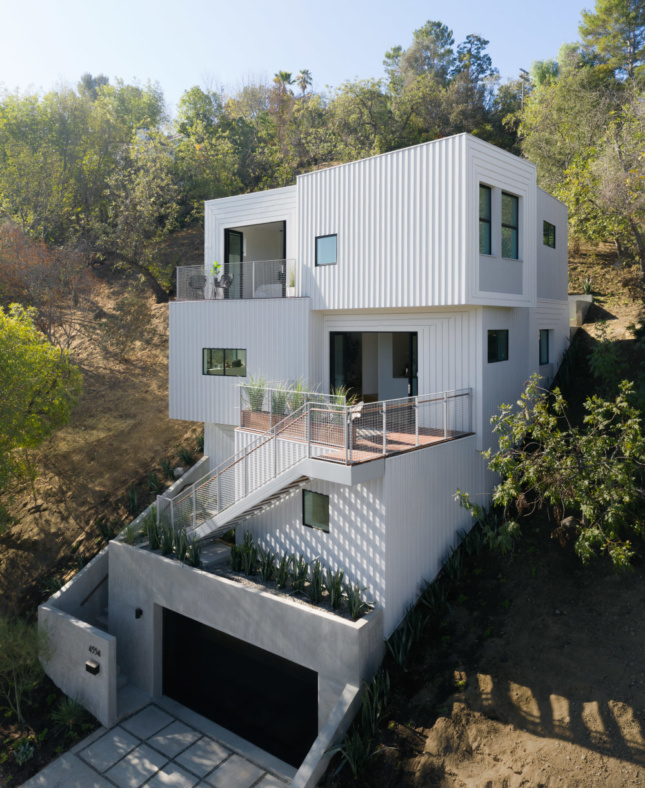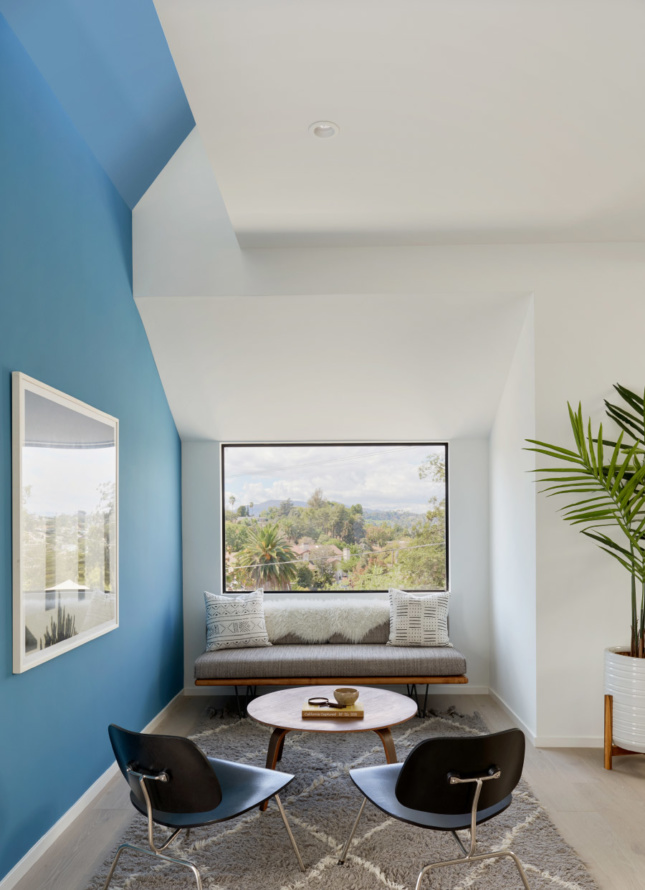As real estate prices continue to climb, Los Angeles’s notoriously slow and combative building approval process shows no signs of letting up. In response, a growing set of L.A.-area architects have begun to embrace the idea of developing their own projects in-house as a way of taking charge of—and ultimately, profiting from—the production of architecture.
L.A. and New York City-based FreelandBuck, for example, recently completed work on a 2,200-square-foot speculative house in L.A.’s Mount Washington neighborhood. FreelandBuck partnered with L.A.-based developer Urbanite Homes for the hillside project, which contains a rental income–producing Accessory Dwelling Unit to make the hefty price point more palatable to potential buyers. According to the architects, the development partnership provided some wiggle room on the design that might not have been possible had they been hired as conventional designers. As a result, the architects were able to take risks with materiality by wrapping the four-story building in decontextualized board-and-batten siding. The freedom extended to the interiors of the home as well, where the ground floor areas are carved up into a series of discrete and complimentary rooms.

This envelope-pushing effort is mirrored nearby in the hills above Highland Park, where John Southern, principal at Urban Operations, has developed a handful of speculative single-family homes that encapsulate the architect’s form-forward design aesthetic. A 2,400-square-foot residence at 4752 Baltimore is designed around staggered floor plates in order to maximize outdoor space on the tight hillside lot. The downslope-facing house skews in elevation to best align with the site’s winning views, which are matched by large format skylights. The architect-led development not only yields a more formally interesting home, but also creates opportunities for the designer to imbue what would normally be a hurried, one-size-fits-all commission with lightness, generously proportioned rooms, and interlocking spaces.

Workplays Studio* Architecture, on the other hand, wears the hybrid architect-developer hat in order to create a live/work unit that acts as “an experiment in living on commercial corridors.” For their Pico Live/Work project, the architects added a single-family residence above an existing storefront. By linking the two levels with a courtyard entry and positioning a street-facing workshop in opposition to the home, the project approaches an alternative to conventional mixed-use development as it is normally practiced in the region.
Not only that, but the design is developed at a project scale modest enough to be undertaken by a small team, a far cry from the anonymous, big-block developments that have drawn so much community ire in recent years.











